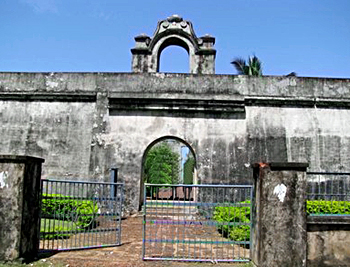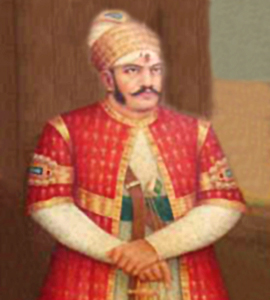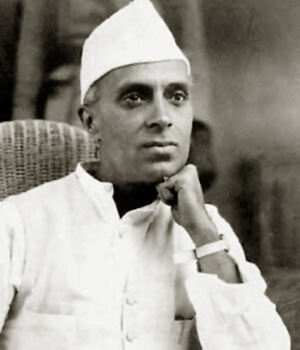 Freedom Struggle in Kerala had commenced earlier unlike the greatest explosion in the north against the British that took place in 1857. In Kerala violent outbreaks against the British had commenced more than a century earlier. In 1684, the British had obtained from the Rani of Attingal some land at Anjengo (located around 36 kms north of Thiruvananthapuram) for the location of a factory. In 1695, they had also built a fort there. They had nominally paid deference to the sovereignty of the ruler by giving her periodical presents. Feudal nobles who rose to power in this area demanded that the presents should come to them first for transmission to the Rani. The British refusal to agree to this led to a rebellion and also to the siege of the Anjengo Fort. Though the insurrection failed in expelling the British, the losses of the latter were heavy.
Freedom Struggle in Kerala had commenced earlier unlike the greatest explosion in the north against the British that took place in 1857. In Kerala violent outbreaks against the British had commenced more than a century earlier. In 1684, the British had obtained from the Rani of Attingal some land at Anjengo (located around 36 kms north of Thiruvananthapuram) for the location of a factory. In 1695, they had also built a fort there. They had nominally paid deference to the sovereignty of the ruler by giving her periodical presents. Feudal nobles who rose to power in this area demanded that the presents should come to them first for transmission to the Rani. The British refusal to agree to this led to a rebellion and also to the siege of the Anjengo Fort. Though the insurrection failed in expelling the British, the losses of the latter were heavy.
The revolt of the Raja of Pazhassi of the Kottayam (Malabar) royal family created far more serious problems for the British. The provocation was the unimaginative policy of the British in the collection of revenue. Cast in a similar mould of tragic heroism was the revolt of Velu Tampi. He was the minister of Travancore, but found that it was the British Residents who was actually ruling the land. The overbearing conduct of this official of the imperialist power provoked Tampi to revolt. Paliath Achan, his counterpart in Cochin, who was also chafing under British interference in internal affairs, joined forces with him. In 1808, the combined forces stormed the British Residency in Cochin. But the British separately defeated the insurgents under Paliath Achan in Cochin and their reinforcements poured into Travancore through the Aramboli pass. Tampi`s forces were defeated. Velu Tampi is considered as one of the great figures of the early phase of the freedom struggle in Kerala.
 Even backward groups revolted when the oppression of the British became extreme in this southern state. In 1812, the Kurichiya Tribe and Kurumba Tribe of Wayanad district rose in revolt against the British Government`s policy of collecting revenue from them in cash. They besieged British garrisons at several places and troops had to be moved from Mysore and the coast into Wayanad for putting down the insurrection.
Even backward groups revolted when the oppression of the British became extreme in this southern state. In 1812, the Kurichiya Tribe and Kurumba Tribe of Wayanad district rose in revolt against the British Government`s policy of collecting revenue from them in cash. They besieged British garrisons at several places and troops had to be moved from Mysore and the coast into Wayanad for putting down the insurrection.
 Moreover, freedom struggle in Kerala is considered to be a part of the constitutional struggle of the whole nation against foreign domination. A district Congress committee was formed in 1908 and a branch of the All-India Home Rule League founded by Annie Besant also started functioning in the district. The Fourth All-Kerala Political Conference held at Payyannur in 1928 was presided over by Jawaharlal Nehru. It passed a resolution requesting the Indian National Congress to adopt complete independence as the goal of the national movement. The `salt satyagraha` launched by Mahatma Gandhi in 1930 had its repercussions in Kerala too. Payyannur was the main venue of the satyagraha in Malabar. Kerala also played an important role in the second phase of civil disobedience movement which began in January 1932, following the failure of the Round Table Conference held in London. All the four hundred delegates who attended the Sixth All-Kerala Political Conference held at Calicut (Kozhikode) in 1932 were arrested. Similar movements emerged in Travancore and Kochi also.
Moreover, freedom struggle in Kerala is considered to be a part of the constitutional struggle of the whole nation against foreign domination. A district Congress committee was formed in 1908 and a branch of the All-India Home Rule League founded by Annie Besant also started functioning in the district. The Fourth All-Kerala Political Conference held at Payyannur in 1928 was presided over by Jawaharlal Nehru. It passed a resolution requesting the Indian National Congress to adopt complete independence as the goal of the national movement. The `salt satyagraha` launched by Mahatma Gandhi in 1930 had its repercussions in Kerala too. Payyannur was the main venue of the satyagraha in Malabar. Kerala also played an important role in the second phase of civil disobedience movement which began in January 1932, following the failure of the Round Table Conference held in London. All the four hundred delegates who attended the Sixth All-Kerala Political Conference held at Calicut (Kozhikode) in 1932 were arrested. Similar movements emerged in Travancore and Kochi also.
The nationalist struggle in Kerala envisaged, along with independence for the whole country, the unification of the Malayalam-speaking people under one administration. One of the earliest resolutions on the subject of a unified Kerala was voted at the State People`s Conference held at Ernakulum in 1928. The Payyannur conference held later in the same year under the chairmanship of Jawaharlal Nehru also passed a resolution requesting the Central Congress leadership to take steps to constitute Kerala as a separate province at the time of the framing of a constitution for free India. The Thrissur Conference of 1947 was very representative. The ruler of Cochin also attended the conference and spoke in favour of establishing a unified Kerala State comprising British Malabar, Cochin and Travancore.






